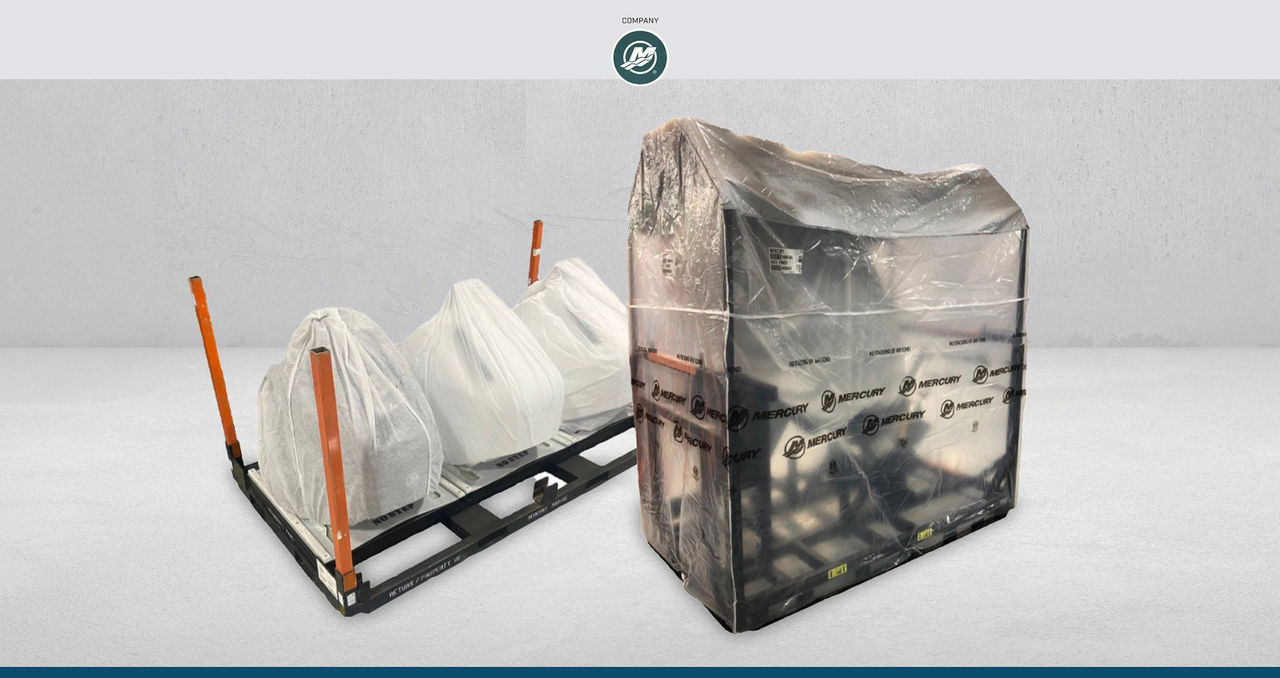The three R’s of conservation — reduce, reuse and recycle — have been a mantra for environmentally conscious individuals and organizations since the first national Earth Day on April 22, 1970. The concept has endured and even grown throughout the decades since.
Today, many of the sustainability initiatives at Mercury Marine embrace one or more of these three principles. Recently, we have taken significant strides to advance a longstanding initiative that dives deep into the "reuse" principle while also encompassing the other two.
Mercury expanded its use of returnable and reusable packaging in 2021 and continues to do so in 2022. We have invested in reusable packaging systems for both incoming and outgoing goods. These systems avoid not only the ongoing acquisition of expendable packaging materials but also the continual generation of landfill waste.
Through agreements with suppliers, various incoming components arrive at Mercury product-assembly facilities in packaging that will be returned to the originator for reuse. The cycle repeats again and again. This applies to hundreds of component parts coming from suppliers as well as parts manufactured in other Mercury plants. In 2021, Mercury invested approximately $5.5 million to acquire roughly 24,000 new reusable containers for these component parts.
The company’s returnable-packaging initiative also applies to outgoing shipments of higher‑horsepower (175hp and greater) outboard and sterndrive engines to boat manufacturers, dealers and distributors. Those recipients return the empty containers and the process repeats, saving landfill waste and cost with each cycle. In 2021, the company invested approximately $2 million to acquire an additional 3,000 reusable packaging container systems for this purpose. Mercury shipped more than 50,000 engines in this manner last year.
According to Mike Scheel, Mercury senior category manager with accountabilities to the company’s returnable/reusable packaging programs, Mercury weighs the benefits to the environment of employing reusable packaging against the environmental cost of repeatedly shipping the packaging materials back and forth.
“The useful duty cycle of our reusable packaging plays a key role in ensuring the environmental benefits of these packaging systems. Over an extended period of reusing a packaging system, the environmental benefit outweighs the environmental cost by a growing margin,” he said.
“Examples that speak to the environmental longevity of our returnable packaging systems include the steel bins and racks that we use today to move parts between plants — they were purchased more than 25 years ago. There are plastic Unipak bases (Unipak is a leading manufacturer of folding carton and rigid boxes) and lids being used today that were purchased for a program in 1998. And we are still using some steel racks that we purchased around 2004 to ship finished goods,” he said.
“Plus, when any of our reusable packaging becomes damaged or is made obsolete because of changes to the components they were designed to contain, we will either break down those packages and repurpose them into new packaging systems or recycle them,” Scheel added.
Several other factors contribute to decisions about the use of returnable/reusable packaging, and the formula can be complex.
“The primary costs of a successful returnable-packaging program include the initial purchase and maintenance of the ‘fleet’ in terms of capital and labor and, of course, the return shipping of the containers,” Scheel said.
“However, we use returnable packaging in many cases where these costs are offset by the avoidance of recurring environmental disadvantages and other problems with disposable packaging. The problems that are remedied by returnable packaging include the wasteful acquisition of new packaging for each shipment; inconsistent container shapes and sizes, which result in inefficient inbound shipping and storage; packaging materials that are less stable in shipping and storage environments; materials that are difficult to recycle and, consequently, go to the landfill; packaging that is less ergonomically friendly for unpacking and handling; and inadequate part protection,” he said.
Although not all incoming and outgoing goods are candidates for returnable packaging, Mercury continues to invest in this environmentally friendly technique and identify opportunities to expand the program.
“It goes without saying that using returnable packaging is fully ingrained in our planning for both operations and new product,” Scheel said. “Using returnable packaging helps us deliver on our sustainability goals.”




